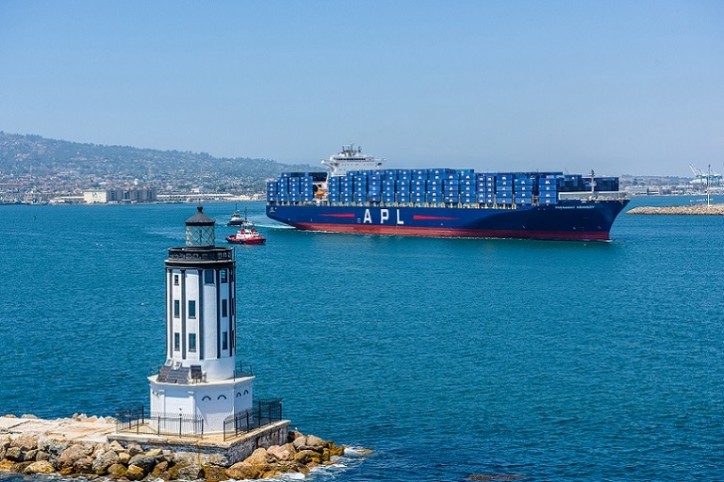Following the CMA CGM Group’s recent announcement on reinforcing its environmental objectives, APL Monday (Jun10) announced a 47.4% reduction in carbon dioxide emissions per container transported per kilometre in 2018, compared to its base level in 2009.

The result follows the Environmental Performance Assessment (EPA) of APL’s 2018 carbon dioxide emission data by the global non-profit organization Business for Social Responsibility’s (BSR’s) Clean Cargo Working Group (CCWG). The Clean Cargo EPA data was verified by Lloyd’s Register Group according to the Clean Cargo verification protocol and principles of ISO14064-3:2006 standard.
APL Global Head for Safety Security and Environment, Dennis Yee said, “As part of the CMA CGM Group, APL is firmly committed towards the protection of the environment and the reduction of its carbon footprint. Building upon the successful results we have achieved in this area, we are determined to persevere in our pursuits for excellence in sustainable shipping.”
APL is fully aligned with the CMA CGM Group’s ambitious commitment to reduce its carbon dioxide emissions per container transported per kilometre by 30% between 2015 and 2025, after the Group has achieved a 50% reduction between 2005 and 2015.
Behind APL’s responsible shipping course is its holistic approach in driving operational efficiencies, fleet and voyage optimisation, as well as the deployment of a fuel-efficient fleet of vessels. Complementing a rigorous maintenance regime, the carrier also identifies solutions that improve its vessel fleet performance.
Gearing up for 2020 Global Sulphur Cap, APL will be using low-sulphur compliant fuel oil across its vessel fleet; employing advanced air quality systems on some vessels that clean emissions before they are released into the atmosphere; and deploying liquefied natural gas (LNG)-fuelled vessels according to vessel plans of the CMA CGM Group. APL will make further inroads in environmental protection and ocean conservation as the Group takes delivery of nine new 22,000 TEU (Twenty-foot Equivalent Units) LNG-powered ships from 2020 onwards.
Reducing air pollutants, APL vessels fitted with cold ironing capabilities use shore power while at berth in US West Coast ports; and in Yantian after a successful pilot with the port.
Stepping-up stakeholder collaborations, APL is now represented on the Clean Cargo Steering Committee. In this capacity, APL stands at the forefront of discussions in relation to clean energy sources, technology innovation and best practices that will facilitate global trade efficiently and responsibly.
APL has maintained pro-active customers engagements so that they too can make a difference in reducing carbon footprint via their shipments with APL. The ocean carrier has been generating quarterly reports of carbon emissions resulting from these shipments, helping them stay aware of their carbon performance. Meanwhile, collaborative opportunities are also explored to find ways for shippers to improve their carbon efficiency.
Source: APL